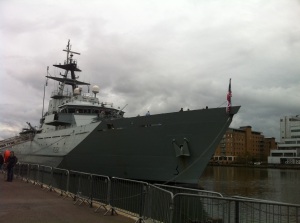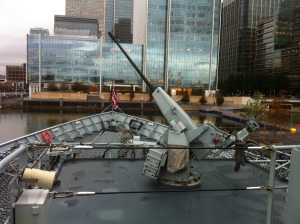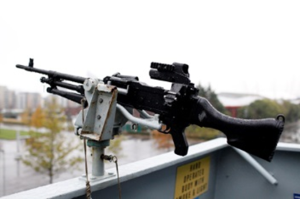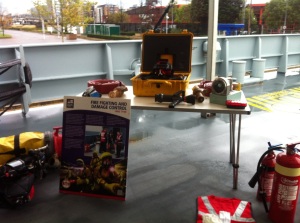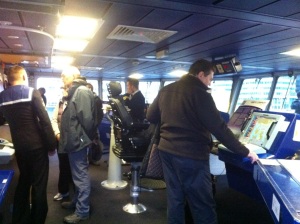In a characteristically thorough and perceptive analysis the ‘Review of Maritime Transport 2013’, just published by UNCTAD (United Nations Conference on Trade and Development), throws light on most of the main issues currently faced by maritime activities around the world. This annual publication, which started life in 1968, has achieved a solid reputation as a first point of reference for many people about industry trends and possible future events. Its utility is greatly enhanced by ready availability free of charge on the organisation’s website.
Among topics selected for special attention in the latest edition, the Review focuses on how the global shipping industry will be financed in future years. Where will new money come from? The partial withdrawal of the banking sector as a traditional source of finance has left a large gap needing to be filled. Private equity funds have stepped into this void, and are making an increasingly noticeable impact. Although shipowning previously had not been the most obvious private equity target (because the volatility and downside risks of the shipping sector were unpalatable for them), involvement recently seemed a much more attractive proposition.
The Review’s authors conclude that “the role of private equity funds appears fundamental for the growth of the sector and could affect its development in several ways, including through the consolidation and vertical integration of transport services.” But the authors draw attention to a notable feature: many private equity investors are not long term players. Investments are made by private equity at what they consider to be at or near the bottom of the market. Involvement is often for a temporary period (which may be several years) until the market rebounds, enabling the selling or flotation of investments at a sizeable profit.
In another section focusing on selected emerging trends affecting international shipping, the UNCTAD Review highlights fuel costs and slow steaming, lower-sulphur fuels and air emissions, and innovative ship designs and eco-ships. These separate topics are, of course, linked and feature in much discussion within the maritime industries. They emerge against a background of climate change and its implications. As noted in the report “of all the prevailing challenges…the interconnected issues of energy security and costs, climate change and environmental sustainability are perhaps the most unsettling.” Nevertheless, despite these problems and difficulties, on a more positive note opportunities for the shipping industry are arising from a number of trends which could strengthen or enhance shipping services.
What will be of especial value to many readers of the Review is its comprehensive regular analysis of the fundamental influences affecting the maritime industry, contained in three chapters – developments in international seaborne trade; structure, ownership and registration of the world fleet; and freight rates and maritime transport costs. This analysis is accompanied by detailed statistical tables. There is also a chapter about port developments and another about legal issues and regulatory developments. A discussion about access to maritime transport for landlocked countries is included as well.
One event emphasised, which occurred in 2012, is the turn of the largest shipbuilding cycle in recorded history. Given the chronic overcapacity which has been a feature of many shipping sectors for some time, and the consequent low freight rates prevailing, this is highly significant. For the first time since the beginning of the new millennium, the tonnage of new vessels of all types delivered from world shipyards in 2012 was lower than seen in the preceding twelve months. Every previous year had seen an increased volume.
The resulting capacity expansion over the decade, sometimes very rapid, has seen the world fleet of commercial sea-going ships more than double since 2001, reaching 1.63 billion deadweight tonnes in January 2013. But, reflecting newbuilding deliveries greatly outpacing additional orders placed, the world orderbook for new vessels at shipyards has declined dramatically during the past few years. After an interval, newbuilding deliveries, as highlighted in the Review, are now falling as well. This changing picture, along with other influences including ship recycling and of course further trade growth, can be expected to assist in correcting the excess transport capacity still existing.
Meanwhile global seaborne trade has been growing at a healthy, or what might be described even as a remarkable pace (amid economic setbacks in various countries), in the past few years. The UNCTAD Review emphasises how trade performed better than the world economy in 2012, expanding by an estimated 4.3 percent, nearly the same rate as in the previous year. A volume of 9.2 billion tonnes of goods was loaded in ports worldwide last year, resulting from growth driven in particular by more domestic demand from China, as well as increased intra-Asian and South-South trade.
China’s contribution to all this trade growth has been immense. Calculations based on figures which are not contained in the Review underline the point. These figures compiled by Bulk Shipping Analysis suggest that in the period of ten years between 2002 and 2012, expansion of China’s imports of all cargo types contributed around 46 percent of the entire world increase. For dry bulk commodities, comprising the largest part (over two-fifths) of all world cargo movements, the proportion of growth contributed by China is higher at 63 percent. The Review highlights as a cautionary note the great dependence of dry bulk trade expansion on Asian (and particularly Chinese) demand, and on only two commodities, iron ore and coal.
Looking at aspects of the global merchant shipping fleet, a table showing the world’s 35 largest national fleets by ownership always makes fascinating reading. As in previous years the top four remain the same: Greece, Japan, Germany and China. Country of ownership of a vessel is defined as the place where true controlling interest (the parent company) is located. Significantly, among the top four, China rose from fourth to third position during 2012 so that, at the beginning of this year its fleet of 190.1m deadweight tonnes formed 12 percent of the world total. One year earlier, the Chinese fleet had been 9 percent of the global total, rising from 5-6 percent in the early 2000s. Consequently China is rapidly approaching Greece’s 15 percent and Japan’s 14 percent. Just over two-thirds of China-owned tonnage is registered under foreign flags. When will China’s fleet become the world’s largest? Probably quite soon, although the Review does not say so.
The UNCTAD Review of Maritime Transport is keenly awaited by many who benefit from its extensive coverage of the maritime scene. The updated statistics are very valuable. And its discussion of specific currently prominent aspects (‘hot topics’) justifies anticipation. The latest 2013 edition does not disappoint.
Richard Scott
Visiting Lecturer, Greenwich Maritime Institute and MD, Bulk Shipping Analysis
